Lasse Borgholt
An Unsupervised Approach to Achieve Supervised-Level Explainability in Healthcare Records
Jun 13, 2024Abstract:Electronic healthcare records are vital for patient safety as they document conditions, plans, and procedures in both free text and medical codes. Language models have significantly enhanced the processing of such records, streamlining workflows and reducing manual data entry, thereby saving healthcare providers significant resources. However, the black-box nature of these models often leaves healthcare professionals hesitant to trust them. State-of-the-art explainability methods increase model transparency but rely on human-annotated evidence spans, which are costly. In this study, we propose an approach to produce plausible and faithful explanations without needing such annotations. We demonstrate on the automated medical coding task that adversarial robustness training improves explanation plausibility and introduce AttInGrad, a new explanation method superior to previous ones. By combining both contributions in a fully unsupervised setup, we produce explanations of comparable quality, or better, to that of a supervised approach. We release our code and model weights.
Automated Medical Coding on MIMIC-III and MIMIC-IV: A Critical Review and Replicability Study
Apr 21, 2023Abstract:Medical coding is the task of assigning medical codes to clinical free-text documentation. Healthcare professionals manually assign such codes to track patient diagnoses and treatments. Automated medical coding can considerably alleviate this administrative burden. In this paper, we reproduce, compare, and analyze state-of-the-art automated medical coding machine learning models. We show that several models underperform due to weak configurations, poorly sampled train-test splits, and insufficient evaluation. In previous work, the macro F1 score has been calculated sub-optimally, and our correction doubles it. We contribute a revised model comparison using stratified sampling and identical experimental setups, including hyperparameters and decision boundary tuning. We analyze prediction errors to validate and falsify assumptions of previous works. The analysis confirms that all models struggle with rare codes, while long documents only have a negligible impact. Finally, we present the first comprehensive results on the newly released MIMIC-IV dataset using the reproduced models. We release our code, model parameters, and new MIMIC-III and MIMIC-IV training and evaluation pipelines to accommodate fair future comparisons.
Self-Supervised Speech Representation Learning: A Review
May 21, 2022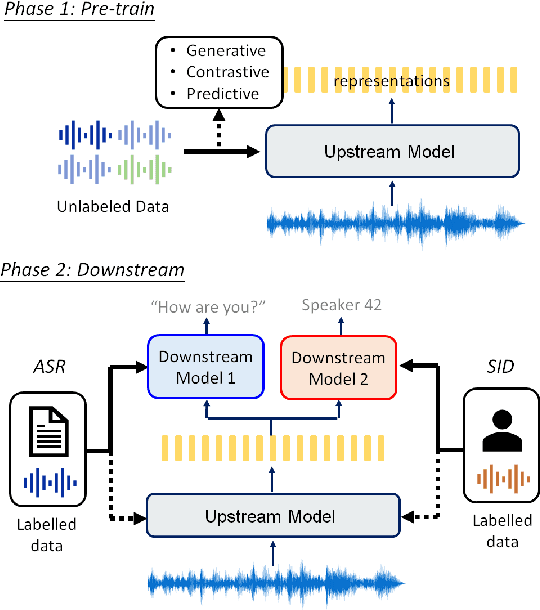

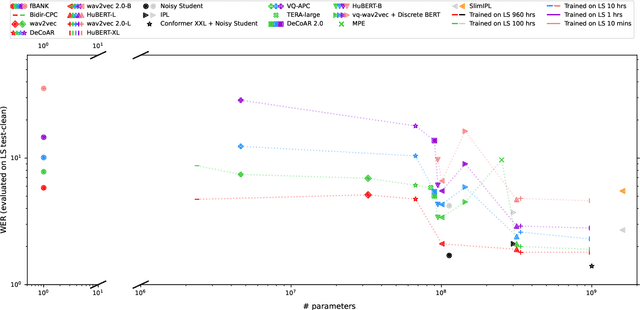
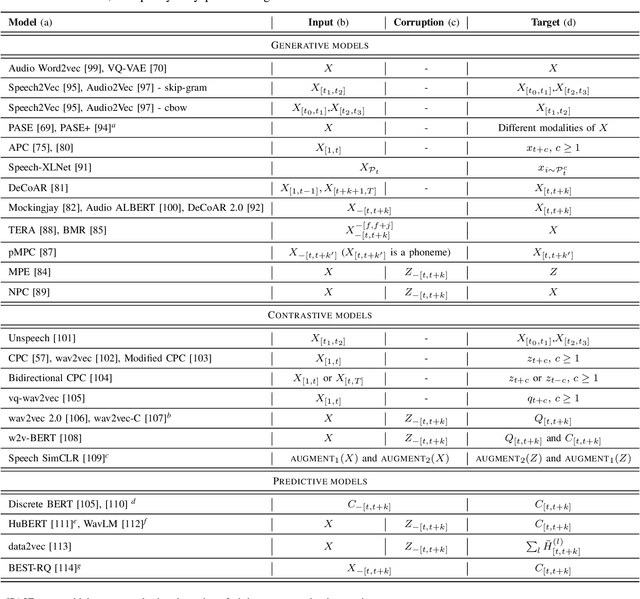
Abstract:Although supervised deep learning has revolutionized speech and audio processing, it has necessitated the building of specialist models for individual tasks and application scenarios. It is likewise difficult to apply this to dialects and languages for which only limited labeled data is available. Self-supervised representation learning methods promise a single universal model that would benefit a wide variety of tasks and domains. Such methods have shown success in natural language processing and computer vision domains, achieving new levels of performance while reducing the number of labels required for many downstream scenarios. Speech representation learning is experiencing similar progress in three main categories: generative, contrastive, and predictive methods. Other approaches rely on multi-modal data for pre-training, mixing text or visual data streams with speech. Although self-supervised speech representation is still a nascent research area, it is closely related to acoustic word embedding and learning with zero lexical resources, both of which have seen active research for many years. This review presents approaches for self-supervised speech representation learning and their connection to other research areas. Since many current methods focus solely on automatic speech recognition as a downstream task, we review recent efforts on benchmarking learned representations to extend the application beyond speech recognition.
Benchmarking Generative Latent Variable Models for Speech
Apr 05, 2022



Abstract:Stochastic latent variable models (LVMs) achieve state-of-the-art performance on natural image generation but are still inferior to deterministic models on speech. In this paper, we develop a speech benchmark of popular temporal LVMs and compare them against state-of-the-art deterministic models. We report the likelihood, which is a much used metric in the image domain, but rarely, or incomparably, reported for speech models. To assess the quality of the learned representations, we also compare their usefulness for phoneme recognition. Finally, we adapt the Clockwork VAE, a state-of-the-art temporal LVM for video generation, to the speech domain. Despite being autoregressive only in latent space, we find that the Clockwork VAE can outperform previous LVMs and reduce the gap to deterministic models by using a hierarchy of latent variables.
A Brief Overview of Unsupervised Neural Speech Representation Learning
Mar 01, 2022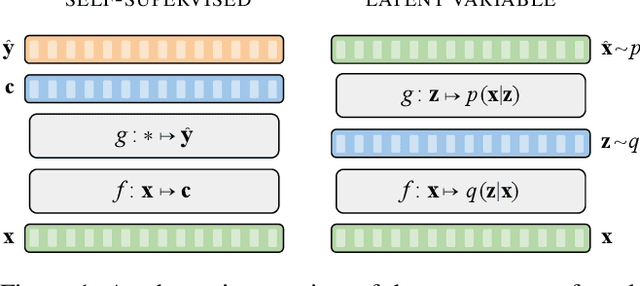
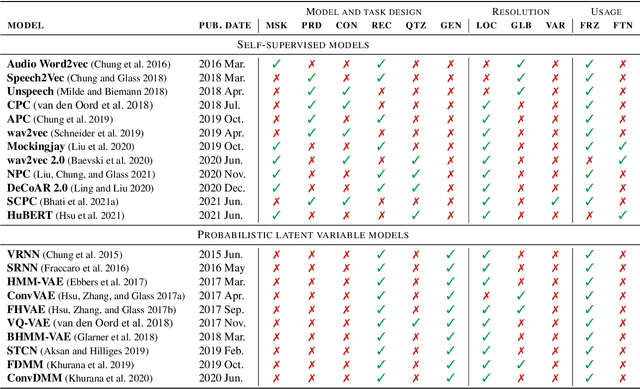
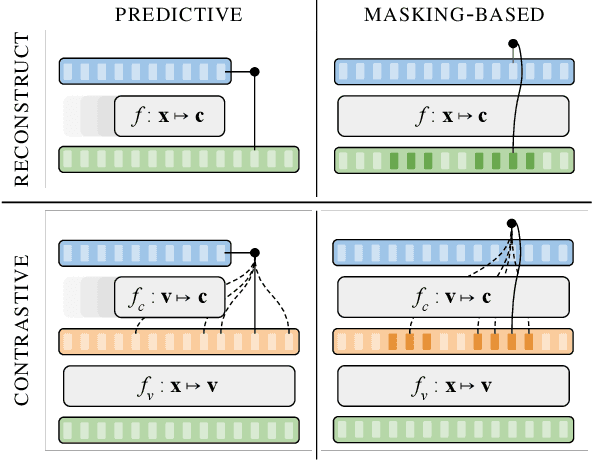
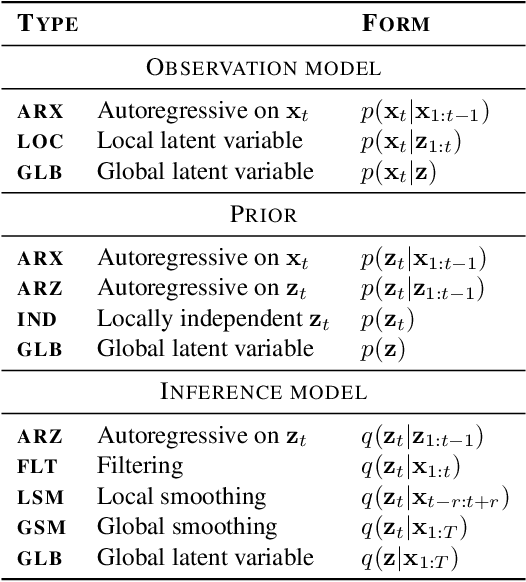
Abstract:Unsupervised representation learning for speech processing has matured greatly in the last few years. Work in computer vision and natural language processing has paved the way, but speech data offers unique challenges. As a result, methods from other domains rarely translate directly. We review the development of unsupervised representation learning for speech over the last decade. We identify two primary model categories: self-supervised methods and probabilistic latent variable models. We describe the models and develop a comprehensive taxonomy. Finally, we discuss and compare models from the two categories.
Do We Still Need Automatic Speech Recognition for Spoken Language Understanding?
Nov 29, 2021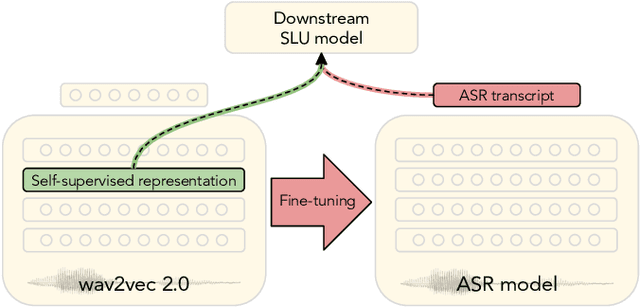

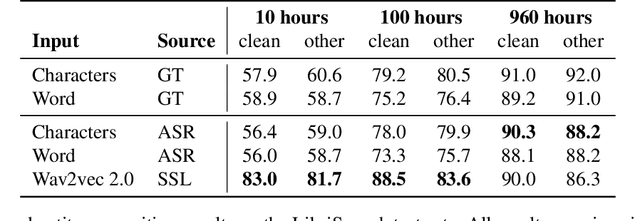
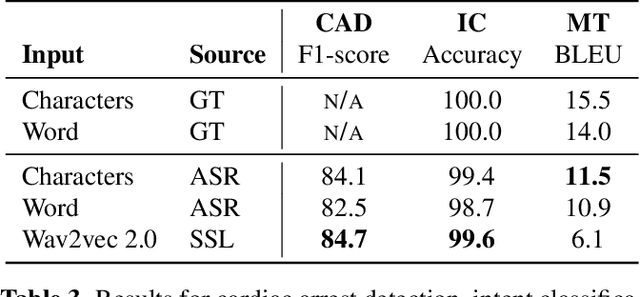
Abstract:Spoken language understanding (SLU) tasks are usually solved by first transcribing an utterance with automatic speech recognition (ASR) and then feeding the output to a text-based model. Recent advances in self-supervised representation learning for speech data have focused on improving the ASR component. We investigate whether representation learning for speech has matured enough to replace ASR in SLU. We compare learned speech features from wav2vec 2.0, state-of-the-art ASR transcripts, and the ground truth text as input for a novel speech-based named entity recognition task, a cardiac arrest detection task on real-world emergency calls and two existing SLU benchmarks. We show that learned speech features are superior to ASR transcripts on three classification tasks. For machine translation, ASR transcripts are still the better choice. We highlight the intrinsic robustness of wav2vec 2.0 representations to out-of-vocabulary words as key to better performance.
Do End-to-End Speech Recognition Models Care About Context?
Feb 17, 2021
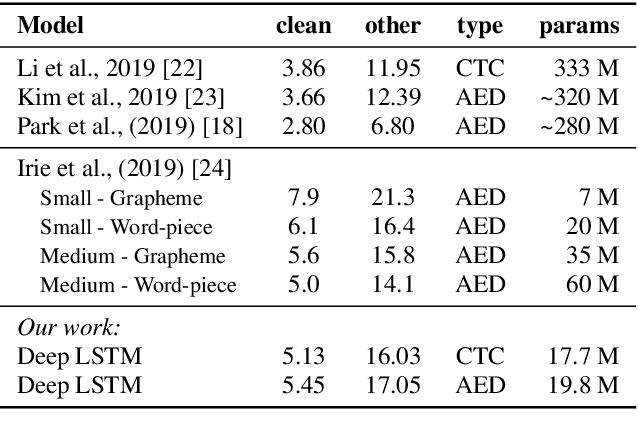
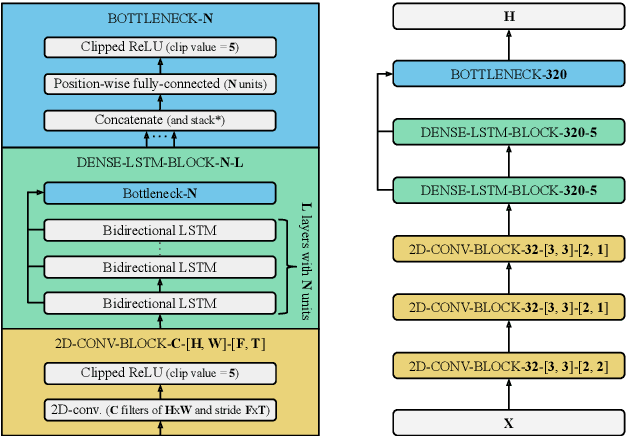
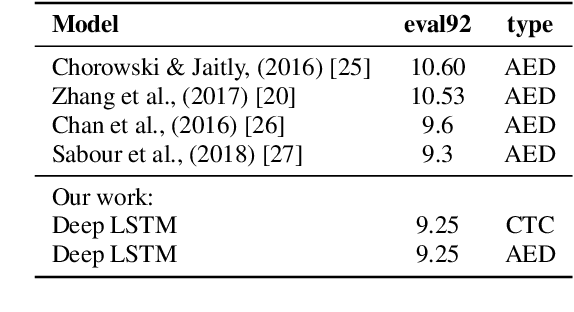
Abstract:The two most common paradigms for end-to-end speech recognition are connectionist temporal classification (CTC) and attention-based encoder-decoder (AED) models. It has been argued that the latter is better suited for learning an implicit language model. We test this hypothesis by measuring temporal context sensitivity and evaluate how the models perform when we constrain the amount of contextual information in the audio input. We find that the AED model is indeed more context sensitive, but that the gap can be closed by adding self-attention to the CTC model. Furthermore, the two models perform similarly when contextual information is constrained. Finally, in contrast to previous research, our results show that the CTC model is highly competitive on WSJ and LibriSpeech without the help of an external language model.
On Scaling Contrastive Representations for Low-Resource Speech Recognition
Feb 01, 2021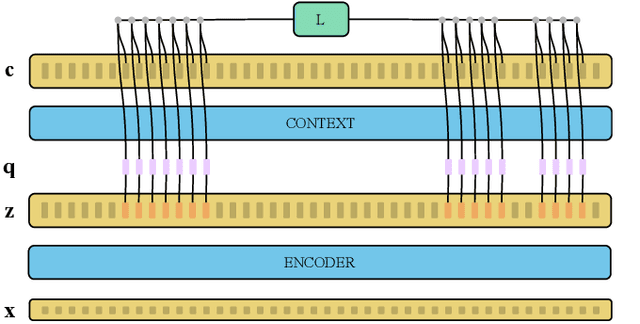
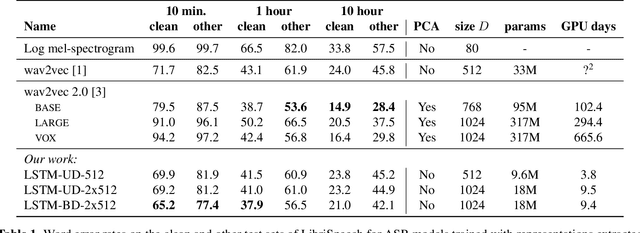
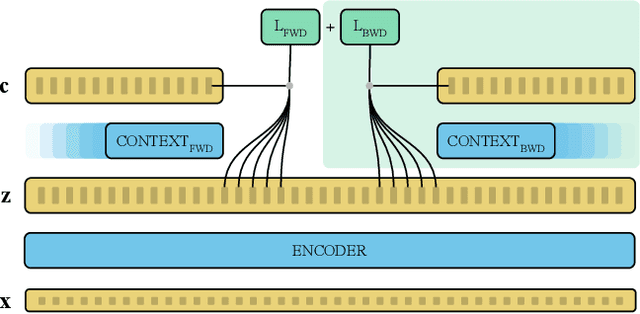
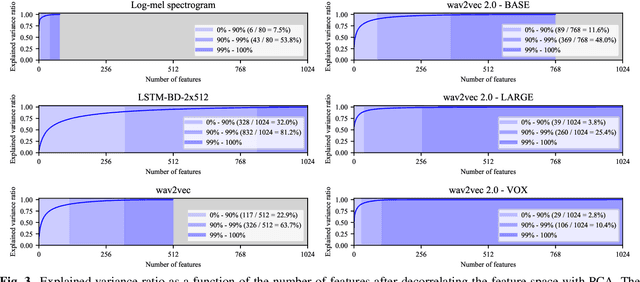
Abstract:Recent advances in self-supervised learning through contrastive training have shown that it is possible to learn a competitive speech recognition system with as little as 10 minutes of labeled data. However, these systems are computationally expensive since they require pre-training followed by fine-tuning in a large parameter space. We explore the performance of such systems without fine-tuning by training a state-of-the-art speech recognizer on the fixed representations from the computationally demanding wav2vec 2.0 framework. We find performance to decrease without fine-tuning and, in the extreme low-resource setting, wav2vec 2.0 is inferior to its predecessor. In addition, we find that wav2vec 2.0 representations live in a low dimensional subspace and that decorrelating the features of the representations can stabilize training of the automatic speech recognizer. Finally, we propose a bidirectional extension to the original wav2vec framework that consistently improves performance.
MultiQT: Multimodal Learning for Real-Time Question Tracking in Speech
May 12, 2020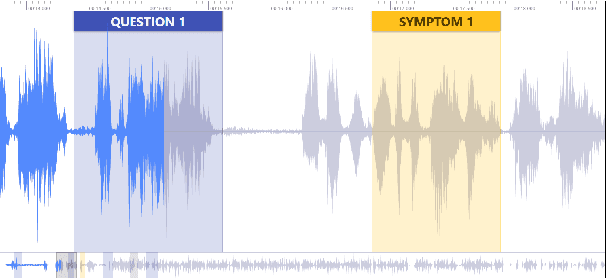

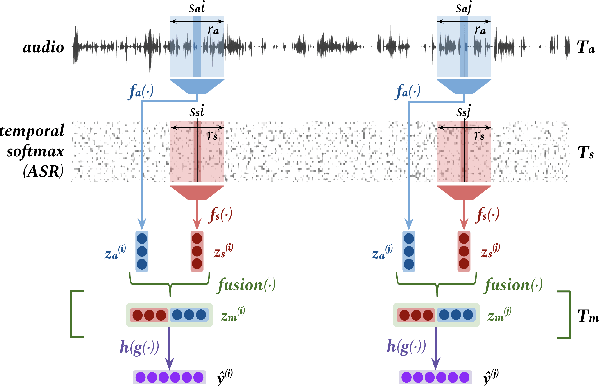
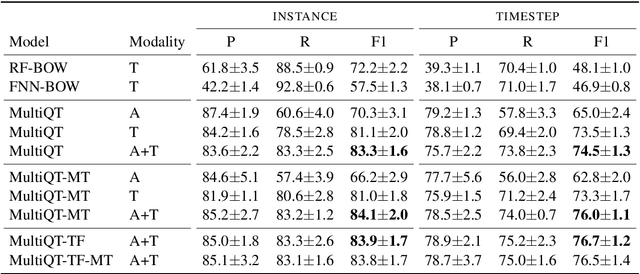
Abstract:We address a challenging and practical task of labeling questions in speech in real time during telephone calls to emergency medical services in English, which embeds within a broader decision support system for emergency call-takers. We propose a novel multimodal approach to real-time sequence labeling in speech. Our model treats speech and its own textual representation as two separate modalities or views, as it jointly learns from streamed audio and its noisy transcription into text via automatic speech recognition. Our results show significant gains of jointly learning from the two modalities when compared to text or audio only, under adverse noise and limited volume of training data. The results generalize to medical symptoms detection where we observe a similar pattern of improvements with multimodal learning.
On the Inductive Bias of Word-Character-Level Multi-Task Learning for Speech Recognition
Nov 28, 2018


Abstract:End-to-end automatic speech recognition (ASR) commonly transcribes audio signals into sequences of characters while its performance is evaluated by measuring the word-error rate (WER). This suggests that predicting sequences of words directly may be helpful instead. However, training with word-level supervision can be more difficult due to the sparsity of examples per label class. In this paper we analyze an end-to-end ASR model that combines a word-and-character representation in a multi-task learning (MTL) framework. We show that it improves on the WER and study how the word-level model can benefit from character-level supervision by analyzing the learned inductive preference bias of each model component empirically. We find that by adding character-level supervision, the MTL model interpolates between recognizing more frequent words (preferred by the word-level model) and shorter words (preferred by the character-level model).
 Add to Chrome
Add to Chrome Add to Firefox
Add to Firefox Add to Edge
Add to Edge